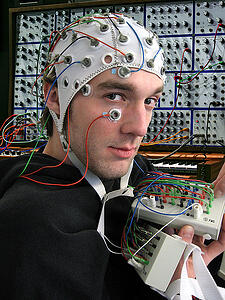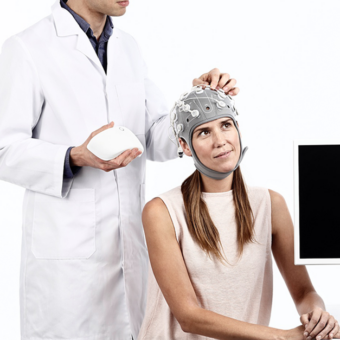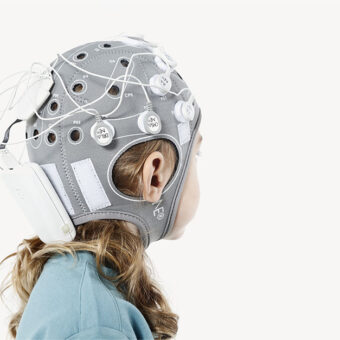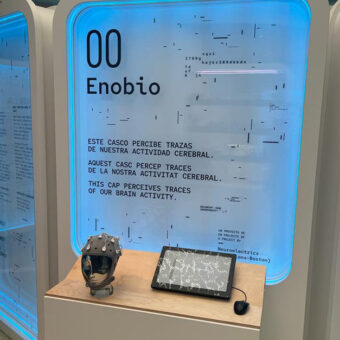By following these tips, you will ensure a good experiment, avoid major problems and in the long term save a lot of precious time. Be sure you follow them very carefully if you want to have good quality and useful EEG data!
1) Understand very well what you want to study and why
…and if it really makes senses to perform such a study. Once this is crystal clear, define your protocol accordingly. Be sure your are following the scientific method, it will be your best friend as a researcher.
A literature review will help you a lot to answer the initial questions. Probably there will be papers related with your experimental problem that will for sure help you define your protocol, and understand the problem itself better. If no literature on your specific topic exist, either you are close to making a very innovative and unique experiment, or your experimental problem does not make sense. Let’s hope your case is the former one.
2) Make sure you have a clean environment
…ideally with only the necessary material (EEG amplifier, computer and monitors and chairs). If possible, the computer should be placed outside the recording room. This is the case in proper laboratory settings, where a Faraday cage is often used, to reduce or cancel the line noise interference. With newer technologies, such as active electrodes, the use of a Faraday cage is not really needed, and in most cases you will not have access to a laboratory EEG room.
In any case, prepare your recording room so the participant feels as comfortable as possible (take into account that the subject will be in an unknown place, with one or several unknown researchers, attached to one or several unknown machines…). The room should not be very small in order to avoid claustrophobic feelings. Obviously, there is an exception for this basic tip. If you want to study stress or the effect of unpleasant feelings on the EEG, you should rather do the opposite: make the subject feel as uncomfortable as possible, but in that case do not go too far or you might end up having trouble with your Local Research Ethical Committee.
3) Test your protocol several times before the real experiment
…in other words, perform a pre-recording campaign. When the real recording campaign starts, you should be very well familiarized with the materials and with the protocol. This is not only a good practice, it is necessary, and it will avoid you potential problems that might occur in the middle of a recording. Imagine that the subject is wearing a 256 electrode EEG set-up and you have to cancel the recording because of a simple problem that you could have avoided easily before hand. That would cost you both time and money, and that hurts even more knowing you could have avoided the problem.
4) Perform a preliminary data analysis with the data collected in the pre-recording campaign
…this is a very good practice and might help you to redefine the protocol, if needed. While performing this preliminary data analysis, you will be able to see your experiment from a broader perspective, and you might notice that introducing some changes in the protocol, you could save a lot of time and trouble. You might notice that the file naming you used is not very suitable, you might decide to introduce different conditions in the protocol and so on. This practice can save the whole experiment.
Imagine that you record 30 subjects performing a Event Related Potential Task (and you did not perform the preliminary analysis). Now you start the data processing and you notice that for some reason the triggers were not properly recorded. You just lost the data from 30 subjects. Again, this will cost you time and money, and the solution of this problem was probably something easy to fix and avoidable.

5) Note down all the relevant information for each one of your recordings
…this is very important since it is very likely that during the data processing you notice strange behaviours in some parts of your EEG recordings, and if you do not write down every relevant detail of your recording, you will not be able to remember what happened. Among other things, you should note down the following information:
- if the participant moved, fell asleep, scratched his head or any other details that might affect the EEG recording
- the time of these actions
- the name and contact information of the participants
- age, gender, time and date of the recording and whether they are right or left handed
This can be useful in the case you find different EEG features among two sub-groups of participants: those differences might be due to any of the previous characteristics, or not. In any case you need to be able to discard or accept this type of hypothesis, and without this information, you would not be able to. You can write this information on paper (such as a laboratory notebook) or, even better, in digital format and store it in the same folder where you saved your recordings.
photo credit: krischall via photo pin cc
photo credit: University of Maryland Press Releases via photo pin cc



